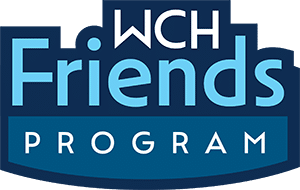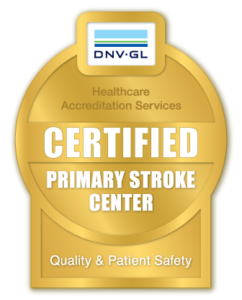
Primary Stroke Center
Stroke Recovery Center in Wooster, Ohio
Stroke rehabilitation, diagnostic testing, and more!
Wooster Community Hospital (WCH) has proudly been certified as a Primary Stroke Center by DNV-GL Healthcare, meeting the standards necessary to support better outcomes for stroke care.
The Primary Stroke Center at WCH’s full-service and acute-care health facility in Wooster, Ohio, offers advanced resources designed to provide the best possible care for a full range of stroke-related medical problems. These include diagnostic testing, treatment, rehabilitation, and education aimed at helping our patients return to living life as fully and as quickly as possible.
Our Primary Stroke Center team is committed to providing you with the most advanced and personalized care available, including the latest technologies and treatment options.
Wooster Community Hospital Primary Stroke Center has received the American Heart Association’s Get with The Guidelines®-Stroke Quality Achievement Award Gold Plus with Target: Stroke Honor Roll Elite, and Type 2 Diabetes Honor Roll for our commitment to ensuring stroke patients receive the most appropriate treatment according to nationally recognized, research-based guidelines.
WCH is also equipped to facilitate patient transfers for additional treatment if needed. DNV-GL’s stroke certification program incorporates portions of the National Integrated Accreditation for Healthcare Organizations (NIAHO) hospital accreditation standards, guidelines of the Brain Attack Coalition, as well as recommendations from the American Stroke Association.
BE FAST to recognize the warning signs of a stroke:
- B: Balance – Is there a sudden loss of balance or coordination?
- E: Eyes – Is there sudden blurred or double vision or sudden, persistent vision trouble?
- F: Face drooping. During a stroke, one side of the face may droop or feel numb.
- A: Arm weakness. Stroke can cause weakness or numbness in one arm.
- S: Speech difficulty. Someone experiencing a stroke may slur their speech or be unable to speak.
- T: Time to call 911. If a friend or loved one exhibits any of these symptoms, even if the symptoms go away, call 911 immediately. Be sure to note the time when the first symptoms appeared. Emergency responders will want to know.
Other symptoms may include:
- Numbness or weakness of the face, arm, or leg, especially on one side of the body
- Blurred vision or temporary vision loss in one or both eyes
- Difficulty walking, dizziness, loss of balance or coordination
- Sudden confusion or inability to understand
- Severe headache that occurs suddenly, with no known cause
We are proud to announce that the WCH Primary Stroke Center has partnered with the OSU Wexner Medical Center, Neurological Division to provide the telestroke program to our community.
Our telemedicine program for stroke includes advanced InTouch Health™ robots in the emergency department at Wooster Community Hospital. Immediate care is crucial to treat stroke patients. WCH’s robot allows stroke neurologists to remotely perform live, real-time audiovisual consultations with the patient and emergency medicine team to speed the delivery of clot-busting drugs crucial to halt and reverse stroke damage. Consider the robot a portal through which a stroke specialist anywhere can be virtually present at a moment's notice.
A stroke specialist is connected through live video to access a patient visually and work in conjunction with the stroke team to quickly begin the care the patient needs. Through the robot’s monitor, patients and families can also see, hear and communicate with the specialist.

 Cancer Care
Cancer Care
 Rehabilitation
Rehabilitation
 Women's Health
Women's Health
 Behavioral Health
Behavioral Health
 Cardiovascular Care
Cardiovascular Care
 Surgery
Surgery





